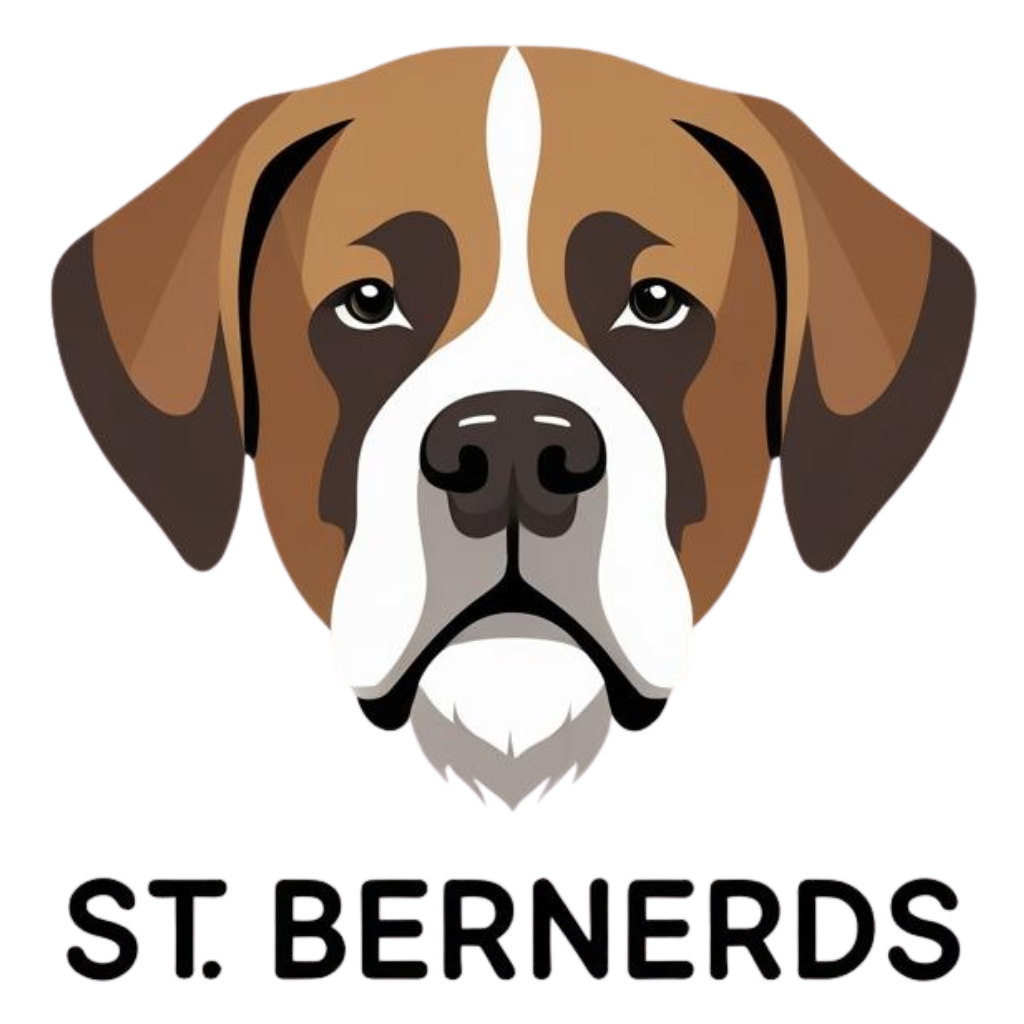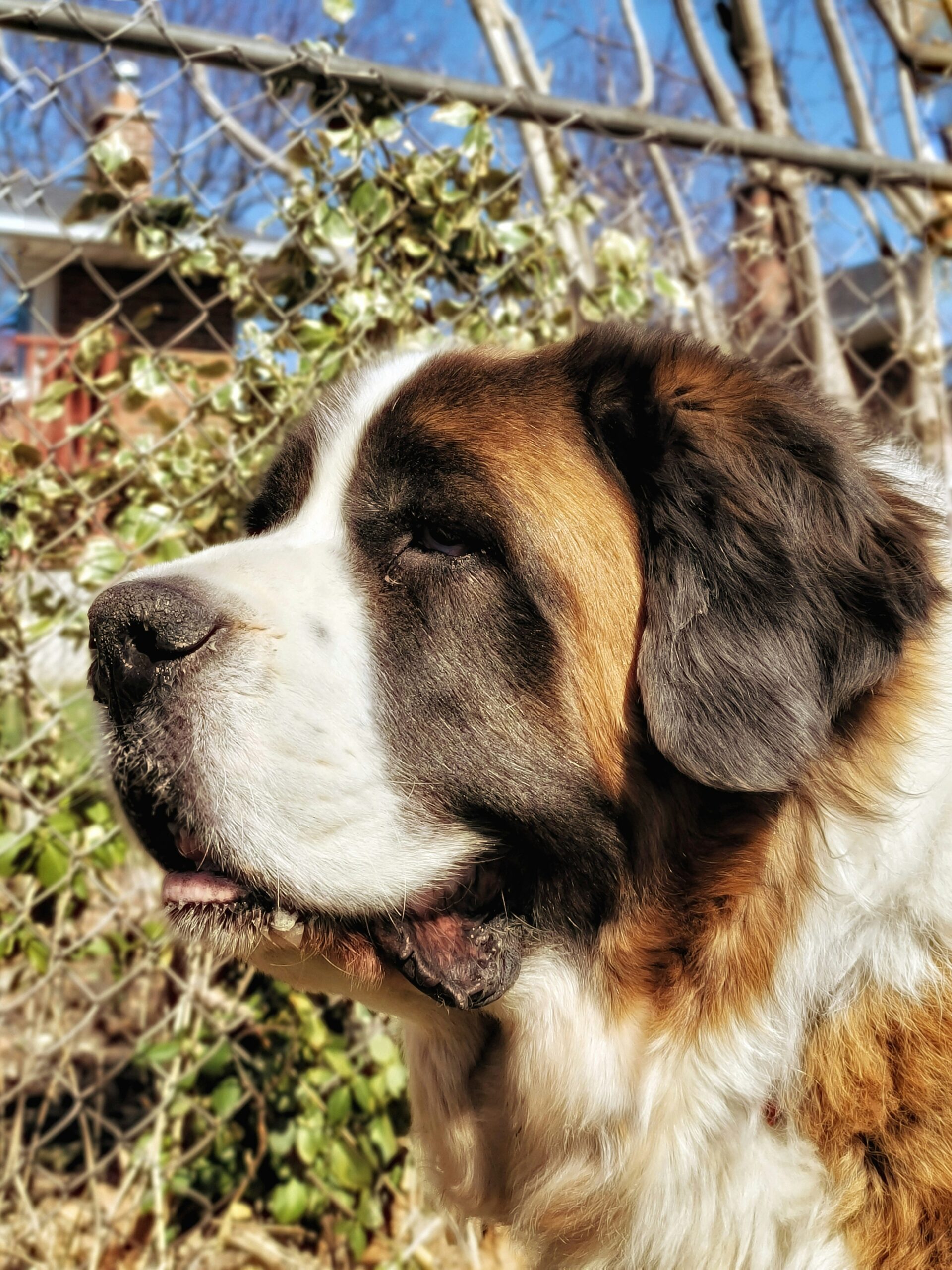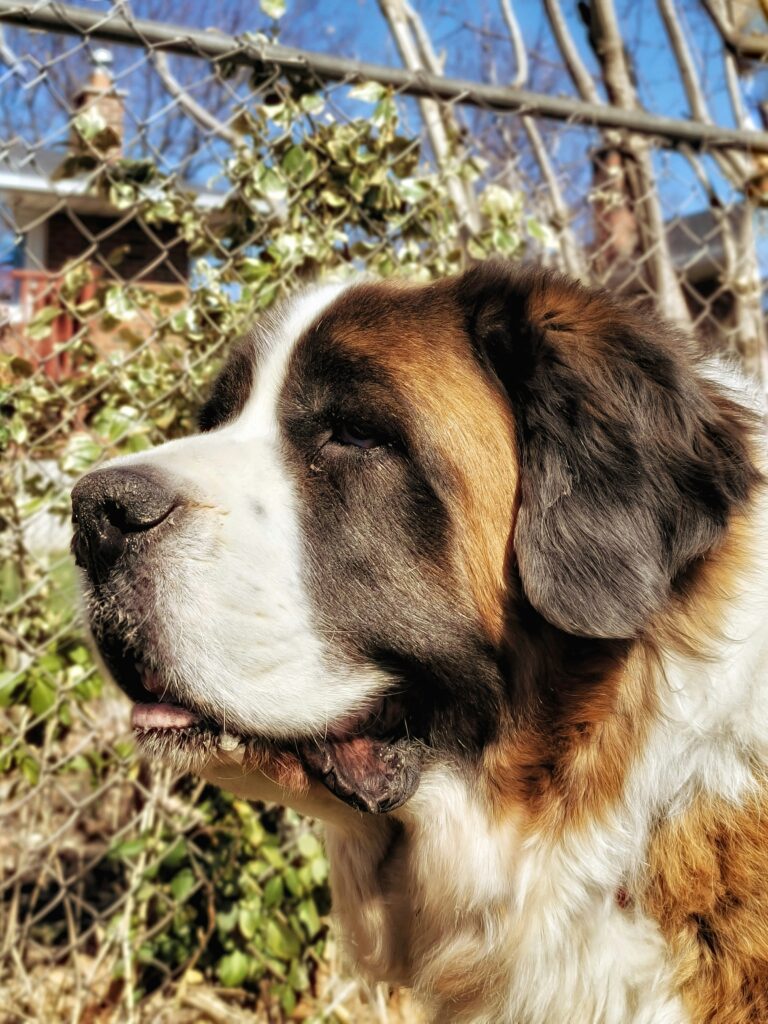If you’re on the hunt for a one-of-a-kind companion that combines the gentle giant vibes of a Saint Bernard with the spunky, loyal energy of a Pitbull, then let me introduce you to the Saint Bernard Pitbull Mix. Hybrid dog breeds are all the rage these days, and it’s no surprise why. These mixes bring together the best traits of two beloved breeds, creating pups that are as unique as they are lovable. People are increasingly drawn to hybrids for their distinct looks, personalities, and the chance to own a dog that stands out from the pack.
The Saint Bernard Pitbull Mix, sometimes called a Saint Pit or Saint Bull, is a fascinating combo that blends the massive, cuddly frame of the Saint Bernard with the muscular, athletic build of the Pitbull. It’s a match made in doggy heaven, but it’s not a breed for everyone. In this article, we’re diving deep into everything you need to know about this hybrid—from their characteristics and temperament to how to care for them and whether they’re the right fit for your lifestyle. So, grab a cup of coffee, and let’s chat about this amazing mix!

Understanding the Saint Bernard Pitbull Mix Breed
First things first, let’s break down what makes the Saint Bernard Pitbull Mix so special by looking at the parent breeds. The Saint Bernard is a giant breed, originally bred in the Swiss Alps for rescue work. They’re known for their massive size, fluffy coats, and incredibly gentle, patient nature. Often weighing between 120 to 180 pounds, these dogs are the epitome of “gentle giant.” On the other hand, the Pitbull—often referring to the American Pit Bull Terrier or similar breeds like the American Staffordshire Terrier—is a medium-sized, muscular dog with a reputation for strength and loyalty. Pitbulls typically weigh between 30 to 60 pounds and are known for their high energy and affectionate personalities, though they sometimes get a bad rap due to misconceptions.
When you mix these two, you get a Saint Bernard Pitbull hybrid that’s a bit of a wildcard in terms of appearance and size. Physically, these dogs often land somewhere in the middle of their parents’ size range, weighing anywhere from 60 to 120 pounds and standing tall with a sturdy, muscular build. Their coat can vary too—some inherit the thick, fluffy fur of the Saint Bernard, while others have the shorter, sleeker coat of a Pitbull. You might see a mix of colors like brindle, fawn, white, or black, often with the iconic markings of either parent breed.
Now, let’s talk personality. The Saint Bernard Pitbull Mix typically combines the sweet, laid-back demeanor of the Saint Bernard with the playful, protective instincts of the Pitbull. These dogs are often incredibly loyal, forming strong bonds with their families. They can be gentle and patient, especially with kids, but they’ve also got a lively, energetic side that loves playtime. However, their temperament can vary depending on which parent they take after more, so early socialization is key to shaping a well-rounded pup.
Caring for Your Saint Bernard Pitbull Mix
Alright, let’s get into the nitty-gritty of caring for a Saint Bernard Pitbull Mix. These dogs are a big responsibility, and their needs reflect their size and energy levels. Starting with diet, you’ve got to fuel this hybrid right. Given their potential size and activity level, they’ll need a high-quality dog food that’s rich in protein to support muscle health and energy. Depending on their weight, you might be feeding them anywhere from 3 to 6 cups of kibble a day, split into two meals to prevent bloat—a common concern for larger breeds like the Saint Bernard side of the mix. Always consult with your vet to tailor their diet, especially since overfeeding can lead to obesity, which puts strain on their joints.
Exercise is another biggie for the Saint Bernard Pitbull cross. These dogs inherit the Pitbull’s high energy and the Saint Bernard’s need for moderate activity, so plan for at least 60 to 90 minutes of exercise daily. Think long walks, hikes, or even some backyard play sessions where they can run around and burn off steam. Mental stimulation is just as important—puzzle toys or training exercises can keep their sharp minds engaged. Without enough activity, they might get bored and turn to destructive behaviors like chewing or digging.
When it comes to grooming and health, the Saint Bernard Pitbull Mix can vary. If they’ve got more Saint Bernard in them, expect a thicker coat that sheds, especially during seasonal changes. Weekly brushing will help manage the fur, and you might need to step it up during shedding season. If they lean more toward the Pitbull side, their shorter coat will be lower maintenance, but regular brushing still keeps their skin healthy. Health-wise, keep an eye out for issues common to both parent breeds, like hip dysplasia, heart conditions, or skin allergies. Regular vet checkups, a good diet, and proper exercise can go a long way in keeping your pup in tip-top shape.
Training and Socialization of a Saint Bernard Pitbull Mix
Let’s chat about training and socialization because, with a dog as strong and powerful as a Saint Bernard Pitbull hybrid, getting this right from the start is non-negotiable. These dogs are a mix of brawn and brain, so early training is crucial to ensure they grow up to be well-mannered companions. Start with basic commands like sit, stay, and come as soon as you bring your pup home. Positive reinforcement works wonders—treats, praise, and playtime will motivate them way more than harsh corrections. Since they can be strong-willed (thanks, Pitbull genes!), consistency and patience are your best friends.
Socialization is just as important for a Saint Bernard Pitbull Mix. Expose them to different people, pets, and environments while they’re young to help them feel confident and friendly in all sorts of situations. The Saint Bernard side often brings a calm, sociable nature, but the Pitbull’s protective instincts can make them wary of strangers if not properly socialized. Take them to dog parks, invite friends over, and let them experience the world in a safe, controlled way. A well-socialized Saint Pit is more likely to be the gentle, loving dog you want by your side.
Now, let’s be real—there can be some behavioral challenges with this mix. Their size and strength mean they might pull on the leash or get overly excited during play. Some may also inherit the Pitbull’s tendency to be dog-selective, meaning they don’t always get along with other pups. If you notice any stubbornness or reactivity, don’t hesitate to work with a professional trainer. Addressing these issues early prevents them from becoming bigger problems down the road.
Is a Saint Bernard Pitbull Mix Right for You?
So, you’re smitten with the idea of a Saint Bernard Pitbull cross, but is this hybrid the right dog for you? Let’s break it down. First off, consider your living situation. These dogs are big—sometimes really big—and they need space to move around. A small apartment might not be the best fit unless you’re committed to long daily walks and trips to the park. Ideally, a home with a fenced yard where they can stretch their legs is perfect. They can adapt to different climates, but if they’ve got a thicker Saint Bernard coat, they might overheat in hot weather, so keep that in mind.
When it comes to compatibility, the Saint Bernard Pitbull Mix can be a fantastic family dog. Their gentle, protective nature often makes them great with kids, though their size means you’ll need to supervise interactions with little ones to avoid accidental knocks. They can also get along with other pets if socialized early, but their Pitbull side might make them less tolerant of other dogs, especially if they sense a challenge. If you’ve got other animals at home, slow introductions are key.
Before adopting a Saint Bernard Pitbull hybrid, think about a few key factors. Do you have the time and energy to meet their exercise needs? Are you prepared for potential health issues or the cost of feeding a large dog? And, importantly, are you ready to combat any stigma around Pitbull mixes? Some communities or housing situations have restrictions on Pitbull-type dogs, so check local laws. If you’ve thought it through and are ready for the commitment, this mix can be an incredibly rewarding addition to your life.
Conclusion: Embracing the Saint Bernard Pitbull Mix
To wrap things up, the Saint Bernard Pitbull Mix is truly a one-of-a-kind dog that brings together the best of two iconic breeds. With the Saint Bernard’s gentle, loving nature and the Pitbull’s loyalty and spunk, this hybrid is a powerhouse of personality packed into a big, cuddly frame. They’re not just pets—they’re family members who’ll stand by your side through thick and thin. But, as we’ve talked about, they come with big responsibilities, from meeting their exercise and training needs to ensuring they’re a good fit for your home.
If you’re considering bringing a Saint Bernard Pitbull cross into your life, do your homework. Research breeders or look into rescues, talk to owners of similar mixes, and make sure you’re prepared for the journey ahead. Trust me, the effort is worth it. There’s nothing quite like the love and companionship of a Saint Bernard Pitbull Mix—they’re a rare gem that’ll steal your heart and probably a spot on your couch. So, if you’re ready for a big, lovable adventure, this hybrid might just be your perfect match!


















